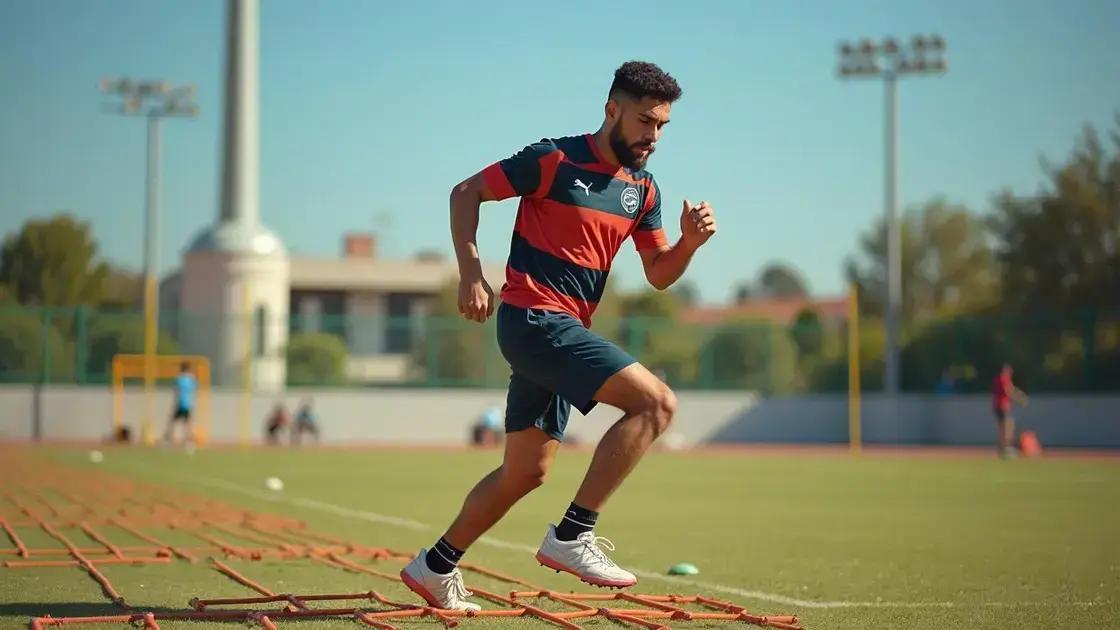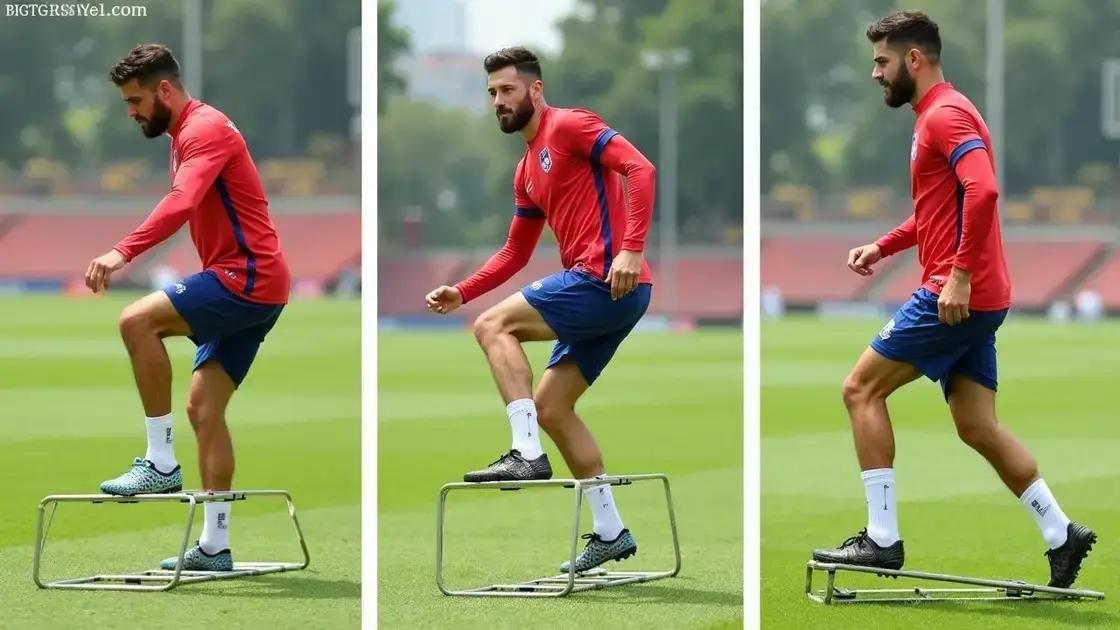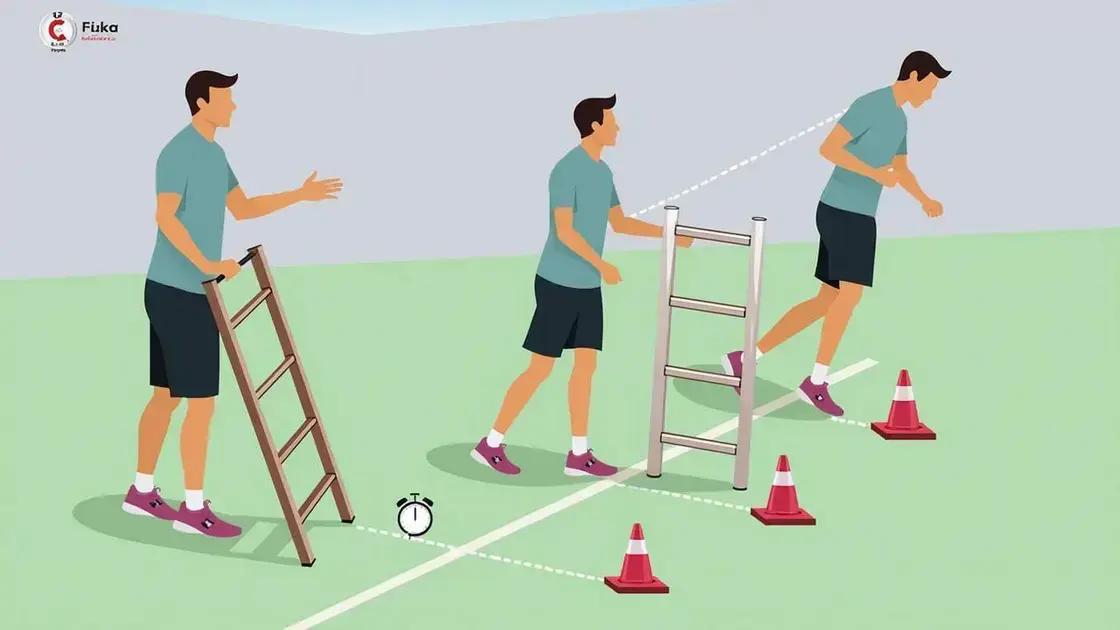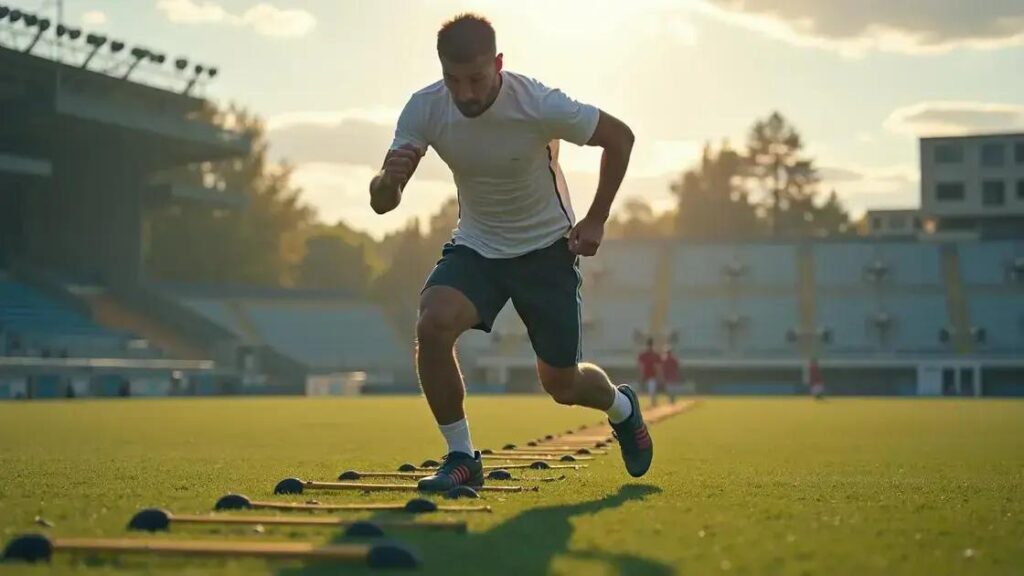Incorporating ladder drills into your routine can significantly enhance mental sharpness by improving focus, reaction time, and cognitive agility. These drills require coordination and quick decision-making, making them an effective tool for athletes and individuals looking to sharpen their mental capabilities.
Ladder drills are not just for physical fitness; they are a powerful tool for improving mental sharpness. By incorporating ladder drills, you can enhance your mental agility and focus. In this article, we’ll explore the benefits of these drills, techniques for effective execution, how to incorporate them into your routine, and ways to measure your improvements in mental agility.
Benefits of Ladder Drills for Mental Sharpness

Implementing ladder drills can provide numerous benefits that enhance mental sharpness. These drills require coordination, focus, and quick decision-making, all contributing to better cognitive function. As you engage in these exercises, the brain works to process rapid movements and strategize foot placements, sharpening your mental agility.
Enhances Focus and Concentration
Practicing ladder drills demands full attention, which helps improve overall concentration. As individuals work through the patterns, they train their brains to stay focused on the task at hand, making it easier to apply this concentration in various aspects of daily life.
Improves Reaction Time
Ladder drills are designed to push your limits, requiring quick footwork and reaction to visual cues. This rapid response training can lead to better reflexes, allowing individuals to respond more effectively in competitive environments.
Boosts Memory and Learning
Regular practice of ladder drills can improve the brain’s ability to retain and recall information. As you memorize different foot patterns and sequences, you stimulate areas of the brain associated with learning and memory, enhancing these cognitive functions.
Promotes Cross-Training for Other Skills
Ladder drills also foster skills that benefit various sports and physical activities. The coordination and agility developed during these exercises translate into improved performance in activities such as basketball, football, and soccer, providing an all-around boost to athletic competence.
Techniques for Effective Ladder Drills

To maximize the effectiveness of ladder drills, it is important to employ various techniques. Here are several strategies to enhance your training:
Start with Basic Patterns
Begin with simple foot patterns such as the two-foot in and out. Familiarize yourself with these movements to build a strong foundation. Mastering basic techniques will help prevent injuries and ensure proper form.
Focus on Speed and Agility
Once you are comfortable with the basics, increase your speed. Push yourself to complete the drills faster while maintaining accuracy. This will not only improve your speed but also enhance your agility and responsiveness.
Incorporate Different Movements
Mix in various movements such as side shuffles, one-foot hops, and backpedals to challenge your body differently. Different movements engage various muscle groups and improve overall coordination.
Use Visual and Audio Cues
Utilize cones, markers, or even music to create visual and auditory cues. These cues can help improve your focus and timing while performing the drills, enhancing cognitive engagement and reaction time.
Practice Consistently
Consistency is key for improvement. Regularly schedule ladder drill sessions, ideally two to three times a week, to reinforce muscle memory and cognitive skills. Over time, your mental sharpness and physical performance will greatly benefit.
Incorporating Ladder Drills into Your Routine

Incorporating ladder drills into your routine can be a game-changer. Here are some tips to help you seamlessly add these effective drills:
Set Clear Goals
Before starting, determine what you want to achieve. Whether it’s improving speed or enhancing mental sharpness, setting specific goals will help you stay focused and motivated.
Schedule Regular Sessions
Consistency is vital for progress. Aim to practice ladder drills at least two to three times per week. Add them to your workout plan and treat them like an important appointment.
Include Warm-up and Cool-down
Always begin with a warm-up to prepare your muscles and prevent injuries. Spend about 5-10 minutes doing dynamic stretches or light jogging. After your drills, incorporate a cool-down routine to aid recovery and flexibility.
Use a Variety of Drills
To keep things interesting, vary your ladder drills. Change the patterns, increase speed, or adjust the complexity. This variety will not only keep you engaged but also challenge your body in new ways.
Monitor Your Progress
Keep track of your performance. Measure improvements in speed, agility, and cognitive sharpness. This monitoring can motivate you to continue and refine your routine for optimal results.
Measuring Improvement in Mental Agility

Measuring your improvement in mental agility is essential to see the benefits of ladder drills. Here are effective ways to evaluate your progress:
Keep a Training Log
Document each practice session, noting your speed, accuracy, and the complexity of drills. This log helps track advances over time and provides insight into your improvement areas.
Use Timed Performance Tests
Conduct regular timed drills to measure how quickly you can complete specific ladder patterns. Compare your results over weeks to see measurable progress in speed and mental reaction times.
Incorporate Cognitive Challenges
During your drills, add cognitive tasks such as simple math problems or following verbal commands. This dual-task approach helps assess how well you can manage mental challenges while physically active.
Self-Assessment Surveys
Periodically take self-assessment surveys to gauge your perception of your mental sharpness and agility. Questions could focus on your reaction time, focus during tasks, and decision-making speed.
Engage in Sports Performance Metrics
Participate in sports or activities that require quick thinking and agility. Track your performance in these areas, as improvements may reflect enhancements in your mental agility from ladder drills.
Incorporating Ladder Drills for Enhanced Mental Sharpness
Ladder drills are a valuable addition to any training routine aimed at improving mental agility. Through consistent practice, you can boost focus, enhance memory, and increase reaction time. By utilizing various techniques, setting clear goals, and regularly monitoring progress, you can effectively incorporate these drills into your life.
As you measure your improvements, you’ll notice the positive effects not just in sports performance, but also in everyday tasks. Embrace the challenge of these drills, and enjoy the benefits that come with sharper mental acuity.
Ultimately, committing to ladder drills can lead to significant enhancements in both your physical and cognitive capabilities.
FAQ – Frequently Asked Questions about Incorporating Ladder Drills for Mental Sharpness
What are ladder drills?
Ladder drills are agility exercises that involve quick, precise foot movements through a series of rungs laid out on the ground, designed to improve speed, coordination, and mental sharpness.
How do ladder drills improve mental sharpness?
Ladder drills enhance mental sharpness by requiring concentration, quick decision-making, and mental engagement as you learn and execute various foot patterns.
How often should I practice ladder drills?
Aim to practice ladder drills at least two to three times a week for optimal benefits in mental agility and physical performance.
Can I combine ladder drills with other exercises?
Yes, ladder drills can be effectively combined with other forms of exercise such as strength training or sport-specific drills to enhance overall performance.
How can I measure improvements in my mental agility?
You can measure improvements by keeping a training log, conducting timed drills, and incorporating cognitive challenges to assess your reaction time and focus.
What equipment do I need for ladder drills?
All you need is an agility ladder, which can be purchased easily. Many drills can also be done using chalk or markers to outline the pattern on the ground.













